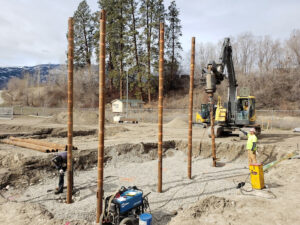
Today’s business landscape is in constant flux and environmental sustainability has become a critical aspect of long-term success. The world we live in is facing unprecedented environmental challenges, from climate change through resource depletion. Given this scenario, the role of leaders in driving sustainability initiatives has become crucial. Here we explore how leaders can effectively integrate environmental considerations into strategic decision-making so that they can foster a culture of sustainability within their organizations. This is one of the most important themes covered in leadership training center classes.
Environmental sustainability as a strategic opportunity
Leadership is in a privileged position to be able to set the tone for organizational priorities and values. Sustainability is not an exception to this. Forward-thinking leaders understand that environmental sustainability is not just a moral imperative; it is also a strategic opportunity to enhance the brand image. Embracing sustainability is a great way for organizations to reduce costs, mitigate risks, enhance their reputation, and also drive innovation.
Integrating the principles of sustainability
At the heart of effective environmental leadership, we find the integration of sustainability principles while will take effect during strategic decision-making processes. Great leaders do not fail to consider the environmental impacts of business operations during every stage across product design, supply chain management and waste disposal for example. Leaders must deem sustainability as a core component of the overall strategy of their organization, which will help set ambitious goals and allocate the right kind of resources.
Sustainable business practices
One of the most important aspects of integrating environmental considerations into strategic decision-making is adopting sustainable business practices. This may refer to investing in renewable energy sources, introducing energy-efficient technologies, optimizing transportation and logistics to reduce carbon emissions, and minimizing the generation of waste through measures like recycling and circular economy. By making sustainability a priority in their routine operations, leaders can ensure meaningful progress towards their cherished environmental goals.
Fostering a culture of sustainability
Effective environmental leadership must go beyond just implementing green practices; it must successfully foster a culture of sustainability within the organization. This can involve engaging employees at different levels, encouraging them to give their ideas towards sustainability initiatives. Leaders will find effective ways to inspire their teams by stressing on a compelling vision for a more sustainable future. They must also provide the necessary support and resources to turn their vision into reality.
Leading by example
Environmental leadership initiatives can bear the expected fruits only when the leaders can lead by example. Through their actions and decisions, leaders must demonstrate their commitment to sustainability. Some concrete measures in these lines can include reducing their own carbon footprint, supporting environmentally responsible policies, or promoting sustainability initiatives in wider circles.
Take Away
The role of leaders in driving environmental sustainability initiatives is crucially important in today’s business landscape – both for the benefit of the world and for the benefit of their business. By integrating sustainability ideas into decision-making and by fostering a culture of sustainability within their organizations, leaders can mitigate environmental risks and also invite new opportunities for growth, improvement, and positive impact. Participate in the best leadership training center classes to hone your leadership’s skills.


